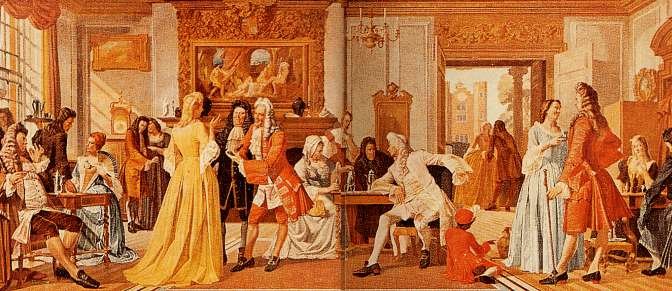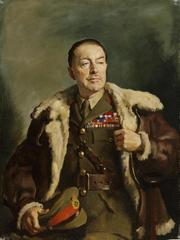
White’s London Visiting Hours, Tickets, and Historical Significance Guide
Date: 14/06/2025
Introduction: White’s Club and Its Lasting Legacy
White’s, situated at 37–38 St James’s Street in London’s Mayfair, is the oldest and arguably most exclusive gentlemen’s club in Britain. Established in 1693 by Francesco Bianco (known as Francis White) as “White’s Chocolate House,” it quickly became a favorite haunt for the elite, evolving from a public chocolate house to a private members-only club by the early 18th century. Over three centuries, White’s has symbolized tradition, privilege, and exclusivity—serving as a discreet meeting ground for aristocrats, politicians, and royals (Detective Tiger; Debrett’s; Quills & Quartos).
Today, White’s is renowned for its Grade I listed Palladian clubhouse, strict all-male membership policy, and deep ties to British political and social history. Although it remains closed to the public, its reputation and influence endure, making it a compelling subject for those interested in British heritage and elite society (Edwardian Promenade; The Week).
This guide provides an in-depth look at White’s Club: from its origins and social significance to practical advice for visitors and alternative ways to explore London’s historic clubland.
Table of Contents
- Origins and Early Development (1693–18th Century)
- The Regency and Georgian Eras: Social and Political Influence
- Victorian Expansion and the Golden Age of Clubs
- Twentieth Century: Tradition and Change
- Architecture and Clubhouse Features
- Visiting White’s: Hours, Tickets, and Access
- Accessibility and Alternative Experiences
- Nearby Attractions and Practical Travel Tips
- Frequently Asked Questions (FAQ)
- Summary and Further Reading
Origins and Early Development (1693–18th Century)
Founded as White’s Chocolate House in 1693, the club began as a fashionable spot for London’s elite to enjoy luxurious hot chocolate—a rare delicacy at the time. It rapidly became a social hub for politicians, aristocrats, and merchants, offering a space for private conversation, gaming, and networking (Detective Tiger).
By the early 1700s, White’s transitioned into a private club, reflecting a broader trend where coffee and chocolate houses evolved into exclusive meeting places for the upper class (Debrett’s). After a devastating fire in 1733, White’s relocated several times before settling at its current St James’s Street address in 1778 (Quills & Quartos).
The Regency and Georgian Eras: Social and Political Influence
Throughout the Regency and Georgian periods, White’s established itself as the premier gentlemen’s club. It became synonymous with the British aristocracy and high-level political influence, aligning itself with the Tory party while rivals like Brooks’s and Boodle’s represented other social and political circles (Debrett’s).
The club’s exclusivity was enforced through a rigorous nomination and election process, with a “code of honor” demanding exemplary conduct. White’s infamous betting book, still preserved today, records eccentric wagers—from marriage outcomes to raindrop races on the windows (Quills & Quartos).
Notable members included Beau Brummell, the Duke of Wellington, and various royals. The iconic bow window, installed in 1811, became a symbol of status—where members could see and be seen by London society (Quills & Quartos).
Victorian Expansion and the Golden Age of Clubs
The 19th century marked the zenith of gentlemen’s clubs, with White’s at the apex (Debrett’s). The club functioned as a venue for leisure, politics, and clandestine negotiations, shaping governmental and societal decisions behind closed doors.
The interiors, decorated in the Palladian style, reflected opulence and tradition. Gambling—illegal outside such private establishments—was a mainstay, alongside formal dining and strict adherence to social codes.
Twentieth Century: Tradition and Change
The 20th century saw broader societal shifts, yet White’s remained resolute in its traditions, notably maintaining its all-male membership policy despite evolving social norms (Debrett’s; Detective Tiger). While many clubs admitted women and relaxed membership rules, White’s sparked controversy, including the resignation of David Cameron in 2008 and protests in 2018 (Detective Tiger).
Despite these challenges, the club endures as a symbol of exclusivity, attracting royalty and influential figures from business and politics.
Architecture and Clubhouse Features
White’s current home is a Grade I listed Georgian building, lauded for its Palladian façade and grand interiors (Detective Tiger). Features include wood-paneled rooms, sweeping staircases, and the famous bow window. The clubhouse houses historic portraits, memorabilia, and the centuries-old betting book (Quills & Quartos).
Note: The interior is strictly off-limits to non-members, maintaining the club’s air of secrecy.
Visiting White’s: Hours, Tickets, and Access
White’s is not open to the public. There are no visiting hours, public tours, or ticket sales. Access is strictly limited to members and their invited guests, who must be nominated and approved through an extensive process.
If you wish to experience the aura of clubland, consider nearby clubs like the Reform Club or Travellers Club, which occasionally offer guided tours ([Internal link: London Historical Sites and Clubs]).
Accessibility and Alternative Experiences
Physical Accessibility
White’s is housed in a historic, multi-storey building with limited modern adaptations (Wikipedia; Edward Couzens-Lake). There is no confirmed step-free access or lifts, and the entrance includes steps. The club does not advertise accessible facilities, making it unsuitable for visitors with mobility impairments (Savile Row Style).
Alternatives for Visitors
- Walking Tours: St James’s Street is accessible, and self-guided walking tours offer exterior views of White’s and other historic clubs (Visit London).
- Other Clubs: Venues like the Reform Club or Royal Automobile Club may offer access during special events (Essential London).
- Themed Experiences: Enjoy the clubland ambiance at accessible venues like Cahoots (1940s cocktail bar) or Sherlock: The Game Is Now (Victorian-themed escape room) (Wanderlust Chloe).
- Accessible Attractions: The British Museum, National Gallery, and Royal Botanic Gardens Kew all offer excellent accessibility (Visit London).
Nearby Attractions and Practical Travel Tips
Attractions Near White’s
- St James’s Palace: Historic royal residence.
- Green Park: Classic London park, step-free paths.
- Royal Academy of Arts: Renowned exhibitions in a historic setting.
- Buckingham Palace: The monarch’s official residence.
Practical Tips
- Respect Privacy: Do not attempt entry or interior photography.
- Public Transport: Nearest tube stations are Green Park and Piccadilly Circus.
- Explore Clubland: Walk St James’s Street to soak up the atmosphere.
Frequently Asked Questions (FAQ)
Q: Can the public visit White’s or buy tickets?
A: No. White’s is strictly private, with no public tours or ticket sales.
Q: Is White’s accessible for those with disabilities?
A: Due to its historic structure, White’s does not offer step-free access or modern accessibility facilities.
Q: Are there public events at White’s?
A: No. All events are private, open only to members and their guests.
Q: Are there alternatives for experiencing London’s club culture?
A: Yes. Walking tours, accessible themed venues, and more inclusive modern clubs like Soho House or The Groucho Club offer alternatives (Time Out).
Q: What can I see if I visit the area?
A: While you cannot enter White’s, you can admire its façade, enjoy nearby historic landmarks, and explore the vibrant Mayfair district.
Summary and Further Reading
White’s Gentlemen’s Club stands as an enduring symbol of British high society, political maneuvering, and tradition. Its evolution from a 17th-century chocolate house to a bastion of exclusivity has left a lasting imprint on London’s cultural landscape (Detective Tiger; Debrett’s). Although public access is not possible, the club’s legacy can be appreciated through its architecture, neighborhood, and the broader context of London’s clubland.
For those seeking a deeper understanding, scholarly works, documentaries, and walking tours offer context, while accessible historic sites nearby deliver a taste of London’s aristocratic past (Quills & Quartos; The Week; Edwardian Promenade).
References and Further Reading
- White’s Club London: History, Visiting Hours, Tickets & More, 2025, Detective Tiger
- A History of Private Members’ Clubs, 2025, Debrett’s
- White’s: A Gentleman’s World of Exclusivity, 2025, Quills & Quartos
- History of Gentlemen’s Clubs in London, 2025, The Week
- The Gentlemen’s Clubs of Edwardian London, 2025, Edwardian Promenade
- Wikipedia: White’s
- Edward Couzens-Lake: White’s Gentleman’s Club
- Savile Row Style: A Window into London’s Gentlemen’s Clubs
- Londonist: The Curious World of London’s Gentlemen’s Clubs
- Essential London: The Exclusive Clubs of St. James’s
- Wanderlust Chloe: Unusual Things to Do in London
- Time Out: 50 Defining Cultural Moments from London’s History
- Visit London Accessibility Information
- Open House London
Internal Links:
- Explore More London Historical Sites
- Guide to Accessibility in London
- History of London’s Gentlemen’s Clubs
Image suggestion: Exterior view of White’s clubhouse at 37–38 St James’s Street, featuring the iconic Palladian façade and bow window.
Alt text: White’s Club London historic clubhouse on St James’s Street showcasing Palladian architecture and bow window.
For more on London’s historic monuments, download the Audiala app and follow our guides to discover the city’s rich heritage, accessible experiences, and hidden gems.




















































































































































































































































